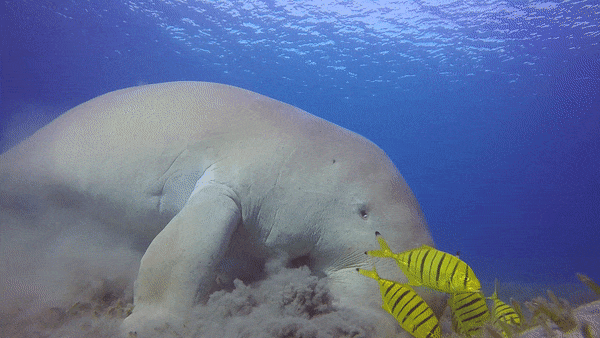
The outlook for Earth’s biodiversity is grim. Pollution, disease, habitat loss and climate change are among the myriad stressors now threatening tens of thousands of species across the planet. Of the more than 150,000 species evaluated by the International Union for Conservation of Nature’s (IUCN’s) Red List of Threatened Species, “over a quarter are threatened with extinction,” says Craig Hilton-Taylor, who heads the IUCN Red List Unit. “The trend on the Red List is that things are getting worse.”
The IUCN announced the latest updates to the list on Friday, including 22 species whose conservation status declined. Abalones, dugongs and other marine creatures were among the species highlighted in the announcement.
The updates come during crucial international negotiations in Montreal to draft a global agreement aimed at protecting biodiversity and reversing its decline by 2030, akin to the Paris climate accord that set goals for reducing greenhouses gas emissions and limiting global warming. The climate emergency often overshadows the plight of Earth’s rapidly vanishing species, but these crises are “two sides of the same coin,” and addressing one helps alleviate the other, Hilton-Taylor says.
The Red List has a network of thousands of researchers around the world who assess the risks facing each species. These are then incorporated into a ranking that ranges from “least concern” to “critically endangered” for those species still found in the wild. (Beyond that are the categories of “extinct in the wild” and “extinct.”) Though the list holds no legal weight, it can serve as “the first call to conservation action,” Hilton-Taylor says, giving governments and conservation groups critical information needed to draft conservation plans.
The abalone is a marine mollusk widely considered a seafood delicacy. Nearly 40 percent of the world’s 54 abalone species are now threatened with extinction, primarily because of unsustainable harvesting and poaching, the IUCN says. Pollution, disease and marine heat waves exacerbated by climate change have compounded these animals’ plight.
Another ocean dweller, the dugong—a marine mammal related to the manatee—has also seen its situation worsen. The population off the coast of East Africa is now considered critically endangered, with fewer than 250 mature individuals remaining in the wild. The dugong population of New Caledonia, a French island territory in the South Pacific, is now listed as endangered. Injuries from boat strikes imperil both populations, as do oil and gas extraction in East Africa and poaching in New Caledonia.
The IUCN also spotlighted the pillar coral, which is found throughout the Caribbean. Its population has declined by more than 80 percent across most of its range since 1990, and it has moved from vulnerable to critically endangered. Of acute concern is the highly contagious stony coral tissue loss disease that has emerged in the past four years. Rising ocean temperatures and pollution can make corals more susceptible to such diseases, and the pillar coral is “really is just the tip of the iceberg” when it comes to the plight of corals, Hilton-Taylor says.
There were some glimmers of hope in the updates, with seven species seeing an improvement in their status. The Yosemite toad moved from endangered to vulnerable, thanks to a comprehensive conservation plan that involved several government agencies, as well as local landholders, Hilton-Taylor says. Likewise, the inclusion of local communities was key to the Australasian bittern, a type of bird, moving from endangered to vulnerable. The bird thrives in wetlands, and conservationists in Australia worked with local rice farmers to make their fields friendly to the species, he says.
These successes show that well-designed conservation plans—ones that involve local communities and that have sufficient resources—can make a difference in reserving species declines, Hilton-Taylor adds. He and many other conservation experts hope the agreement to protect biodiversity being negotiated this month in Montreal will help make such efforts possible on a much larger scale. “We really need a global plan to protect life on earth,” he says, and it must have “ambitious, bold, measurable targets.”
One such target being considered at the current Montreal negotiations is protecting 30 percent of the planet’s lands and oceans by 2030. In a statement issued by the nonprofit Wildlife Conservation Society, its vice president of international policy Susan Lieberman said that in order for the negotiations to succeed, “governments must commit to: conserving and protecting ecological integrity and highly intact ecosystems (from forests to coral reefs); equitably protecting and conserving at least 30% of land and ocean by 2030; and to eliminating exploitation, trade and use of wildlife that is illegal, unsustainable, or that poses a risk of pathogen spillovers to humans, wildlife, or other animals.”
